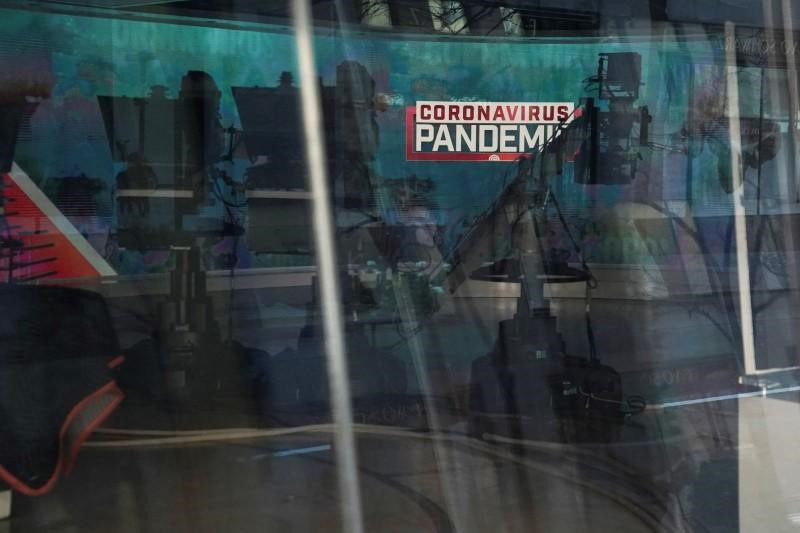NEW YORK, (Reuters) – New York state suffered another quick and brutal rise in the number of COVID-19 cases on Tuesday, becoming the latest U.S. epicenter of the pandemic, as California warned it could be next to face a spike in cases.
New York City, densely packed home to more than 8 million people, had 157 deaths and some 15,000 cases of coronavirus, nearly one-third the U.S. total and more than half the country’s new cases on Tuesday, despite imposing strict limits on travel, socializing and work.
President Donald Trump declared major disasters for New York and Washington state and said he would soon do the same for California as he vowed to marshal “every resource” to fight the outbreak.
“We are enduring a great national trial,” Trump said in a news conference, urging Americans to practice social distancing.
Despite the mounting toll, the Dow Jones Industrial Average soared to its biggest one-day percentage gain since 1933 after U.S. lawmakers said they were close to a deal for an economic rescue package in response to the outbreak.
Democrats, including New York Governor Andrew Cuomo, earlier criticized the Republican president for suggesting he would reopen the nation’s economy by Easter in order to spare businesses as much pain as possible.
“If you ask the American people to choose between public health and the economy, then it’s no contest. No American is going to say accelerate the economy at the cost of human life,” Cuomo said at a Manhattan convention center that was being converted into a 1,000-bed temporary hospital.
It was not clear what Trump had in mind, but legal experts said a U.S. president’s powers to order people back to work or reopen government buildings, transportation or businesses is limited.
U.S. EPICENTER
The World Health Organization said on Tuesday the United States had the potential to become the global epicenter of the pandemic, citing a “very large acceleration” in coronavirus infections.
The expected need for hospital beds in New York state at the peak of the outbreak has spiraled to 140,000, Cuomo said, compared with 110,000 previously projected. Only 53,000 beds are said to be available now.
The number of infections is now doubling every three days in New York and the worst of the outbreak, known as the apex, could arrive in 14 to 21 days, putting huge pressure on health services, Cuomo said.
Nationwide, COVID-19, which broke out late last year in Wuhan, China, has infected nearly 50,000 people and killed 640, with more than a quarter of the deaths in New York state.
Governors from across the United States desperately sought resources for what they feared could be similar waves of the disease across the nation.
California Governor Gavin Newsom, who has warned that the nation’s most populous state needs at least 50,000 more hospital beds, closed parking lots at state-owned beaches and parks after seeing surfers flouting stay-at-home rules.
Attorneys general from 15 states and the District of Columbia urged Trump to use the Defense Protection Act to enlist American industry to supply critically needed medical supplies.
CHILD DIES IN CALIFORNIA
Among California’s 43 reported deaths was a child under the age of 18, according to Los Angeles County health officials.
Los Angeles Mayor Eric Garcetti told CNN the teenager did not appear to have a pre-existing condition.
“We’ve had 11 deaths in Los Angeles including among young people,” he said, with the city believed to be in a timeline about six days behind New York.
Trump has tried to maintain a note of optimism even as health officials say the pandemic has yet to peak, telling a White House news conference on Tuesday that “America will again and soon be open for business. We are not going to let it turn into a long-lasting financial problem.”
Trump said he would make the decision based on facts and data but stuck with his Easter timeframe.
In response to that idea, Illinois Governor J.B. Pritzker said: “There has been some talk over the last 24 hours by some about who this nation might be willing to sacrifice to COVID-19, for the sake of our economic interests. Well, in case there’s any doubt in your minds, I’m not willing to sacrifice anyone.”
Anthony Fauci, director of the National Institute of Allergy and Infectious Diseases, told a later White House briefing the mid-April deadline was flexible.
In homes across America, nerves were fraying after days of people working from home, looking after children whose schools are shut and scaling back on everyday activities.
Terri Gilbert Thompson, 44, and her husband Scott, both teachers in Hilltown, Pennsylvania, where schools have closed, juggled teaching remotely with homeschooling their own triplets and son in second grade.
“It has been a challenge, but we are willing to make it work to ensure that the virus doesn’t spread,” Thompson said. “We’re doing our best to keep our students engaged in learning, monitor and enrich our own kids’ learning, while maintaining our own sanity during this challenging time.”






